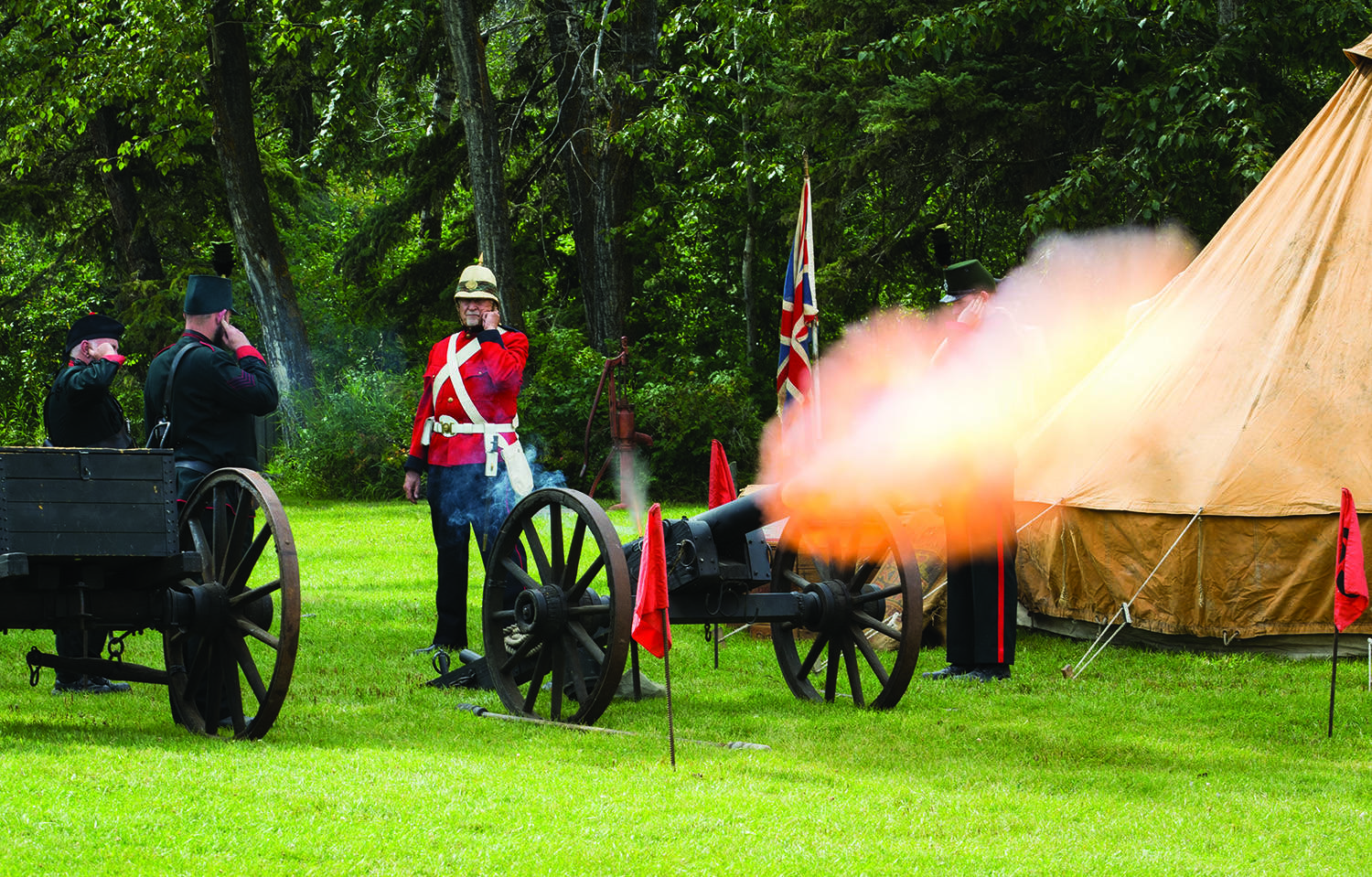An ideal means of celebrating Red Deer’s history will be running Aug. 25th-26th during Fort Normandeau Days.
Organizers say the purpose of the annual event is to celebrate the three founding cultures at the Red Deer Crossing – the First Nations, the Métis and the Europeans.
“It’s very family-friendly,” explained Kathryn Huedepohl, program lead at Waskasoo Environmental Education Society.
“There is an admission charge at the gate – three dollars per person, ten dollars per family of five and fifteen dollars for carloads of six or more, so it’s very reasonable. We will have activities going on all around the site (both days),” she said.
“We’re also having some different booths out to showcase historical and cultural events from the local area.”
Events run from noon to 5 p.m. both days.
“We’ll also be having a photo booth, a kids’ corner and archery. There will be performances and vendors coming out as well,” added Ainsley McLaren, a living history interpreter at Fort Normandeau.
Fort Normandeau Days brings an entire weekend of historical fun, which staff and volunteers at the site have hosted for decades.
Other highlights include 1885-era military re-enactments, period foods and children’s games. Several community sponsors have also come onboard to help make the community event even better.
Fort Normandeau is rich in historical significance. Before the railway connected Edmonton and Calgary in 1893, the Red Deer River Crossing, located just down the river, was the gateway between northern and southern Alberta. The crossing is a relatively shallow area used by myriads of travelers along the well-worn routes which were actually utilized for hundreds of years.
“What I think is neat about Fort Normandeau is that basically it’s where Red Deer got its start,” said Huedepohl.
“I really like how way back when, it was three different cultures and lifestyles coming together, but they all peacefully co-existed which was amazing for the time period when you think about it,” she said.
“Especially when assorted things started happening out east that filtered out here a bit, this area still remained very peaceful and I think that’s quite remarkable.”
In 1884 Robert McClellan built a stopping house at the crossing to take advantage of the traffic on the Calgary & Edmonton Trail, according to the Waskasoo Park web site.
The next year, with the settlers afraid of violence during the Riel Rebellion, his hotel was fortified by the 65th Mount Royal Rifles under the command of Lt. J.E.Bedard Normandeau.
“I love the history of it, and I like how it sort of ties me to where I was born, to the history of the place,” said McLaren.
“I also like little snippets of the history that remind me that the people then are just like people now except for having different contexts and perspectives. But I like some of the little things that show that these were real people who existed and they were similar to me.
“It also gives me a new perspective on the City I grew up in, especially when I pass by the (Ghost series) statue of Reverend Leonard Gaetz downtown. He was one of the first people out here, and was so influential in how Red Deer came together,” she said. “It’s really cool to learn all of that, and to relay that to the people that come out here.”
To get to Fort Normandeau, head west on 32nd St. and continue past Red Deer College over the bridge that travels over the QE II Hwy.
Turn right on Rge. Rd. 280 (on the left is the Red Deer County Office and CrossRoads Church) and continue a few kilometres to the park.



